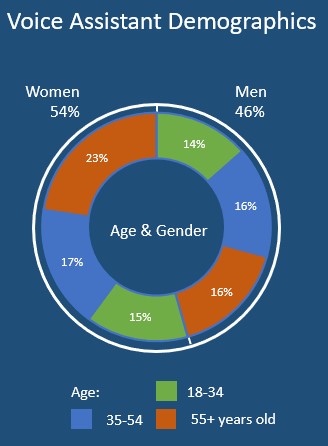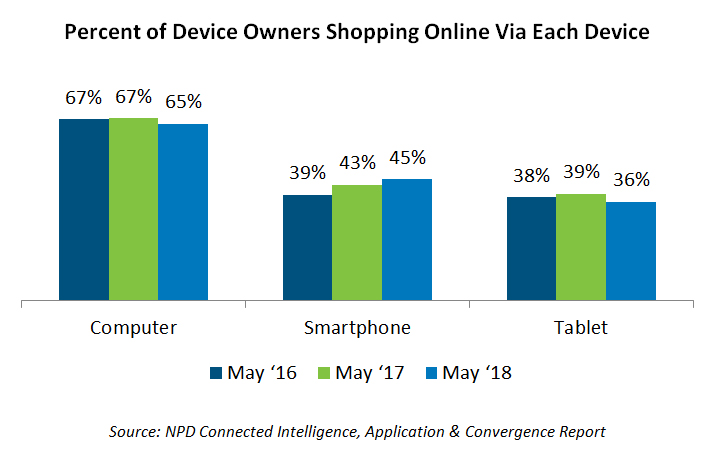Port Washington, NY, July 9, 2020 – The unlocked mobile phone market continues its upward trajectory with an estimated 50.1 million active unlocked smartphones running on U.S. mobile networks, an increase of eight percent[1] based on the latest findings from NPD’s Unlocked Phone Demand Report 5.0. However, despite this growth in units, tailwinds are slowing, likely due to expanding 5G networks and offerings as well as store closures occurring during the COVID-19 pandemic.
“Bolstered by aggressive promotions from carriers, the BYOD [Bring-Your-Own-Device] trend continues to rise, as we saw over 20 percent of customers switching to a new service provider bring their own unlocked smartphones with them[2],” said Brad Akyuz, Executive Director and Industry Analyst, NPD Connected Intelligence. “Yet it’s difficult to overlook the impacts on this market from forces such as COVID-19 and a growing interest in 5G adoption.”
5G Awareness, COVID Threaten the Unlocked Mobile Market (Not in the way conspiracy theorists assert)
Awareness of 5G services have reached record high levels thanks to the continual marketing pushes made by carriers. Unlocked smartphone users, who generally tend to be more tech-savvy than average smartphone users, unsurprisingly over-indexed in their awareness of the 5G technology.

[1] From the end of Q1’2019 to Q1’2020
[2] February 2020
In fact, 42 percent of unlocked smartphone owners cited they would be very or extremely interested in purchasing a 5G smartphone compared to only 31 percent of locked phone owners. This eagerness could slow any momentum in the unlocked market, as non-uniform 5G network deployments make it complex to use an unlocked smartphone on any network at its full 5G potential.
Additionally, store closures as a result of the COVID-19 pandemic limited mobile phone churn activity, long known to be essential for the sales of new locked and unlocked smartphones. As carriers had to migrate to online strategies, lowered operating costs afforded them the opportunity to offer additional subsidies on locked phones. Likewise, even after physical locations began reopening, carriers that want to continue to attract smartphone buyers are offering extended financing options, making locked devices more appealing than ever.
“A number of factors are converging to make locked mobile devices more attractive to consumers who are in the market for a new or upgraded phone,” added Akyuz. “We expect cash-constrained customers in a post-COVID marketplace will either delay device upgrades or opt for cost-effective locked alternatives.”
Methodology
The results of the NPD Group Connected Intelligence Unlocked Phone Demand Report 5.0 are based on online consumer panel research of over 1,500 U.S. unlocked smartphone owners, aged 18+ from diverse regions and demographical backgrounds. This survey was fielded in May 2020.
About Connected Intelligence
Connected Intelligence provides competitive intelligence and insight on the rapidly evolving consumer’s connected environment. The service focuses on the three core components of the connected market: the device, the broadband access that provides the connectivity and the content that drives consumer behavior. These three pillars of the connected ecosystem are analyzed through a comprehensive review of what is available, adopted, and consumed by the customer, as well as reviewing how the market will evolve over time and what the various vendors can do to best position themselves in this evolving market. For more information: http://www.connected-intelligence.com.
About The NPD Group, Inc.
NPD offers data, industry expertise, and prescriptive analytics to help our clients grow their businesses in a changing world. Over 2000 companies worldwide rely on us to help them measure, predict, and improve performance across all channels, including brick-and-mortar and e-commerce. We have offices in 27 cities worldwide, with operations spanning the Americas, Europe, and APAC. Practice areas include apparel, appliances, automotive, beauty, books, B2B technology, consumer technology, e-commerce, fashion accessories, food consumption, foodservice, footwear, home, juvenile products, media entertainment, mobile, office supplies, retail, sports, toys, travel retail, video games, and watches / jewelry. For more information, visit npd.com. Follow us on Twitter: @npdgroup.
Press Contact
Lauren Leetun
407.592.7923


